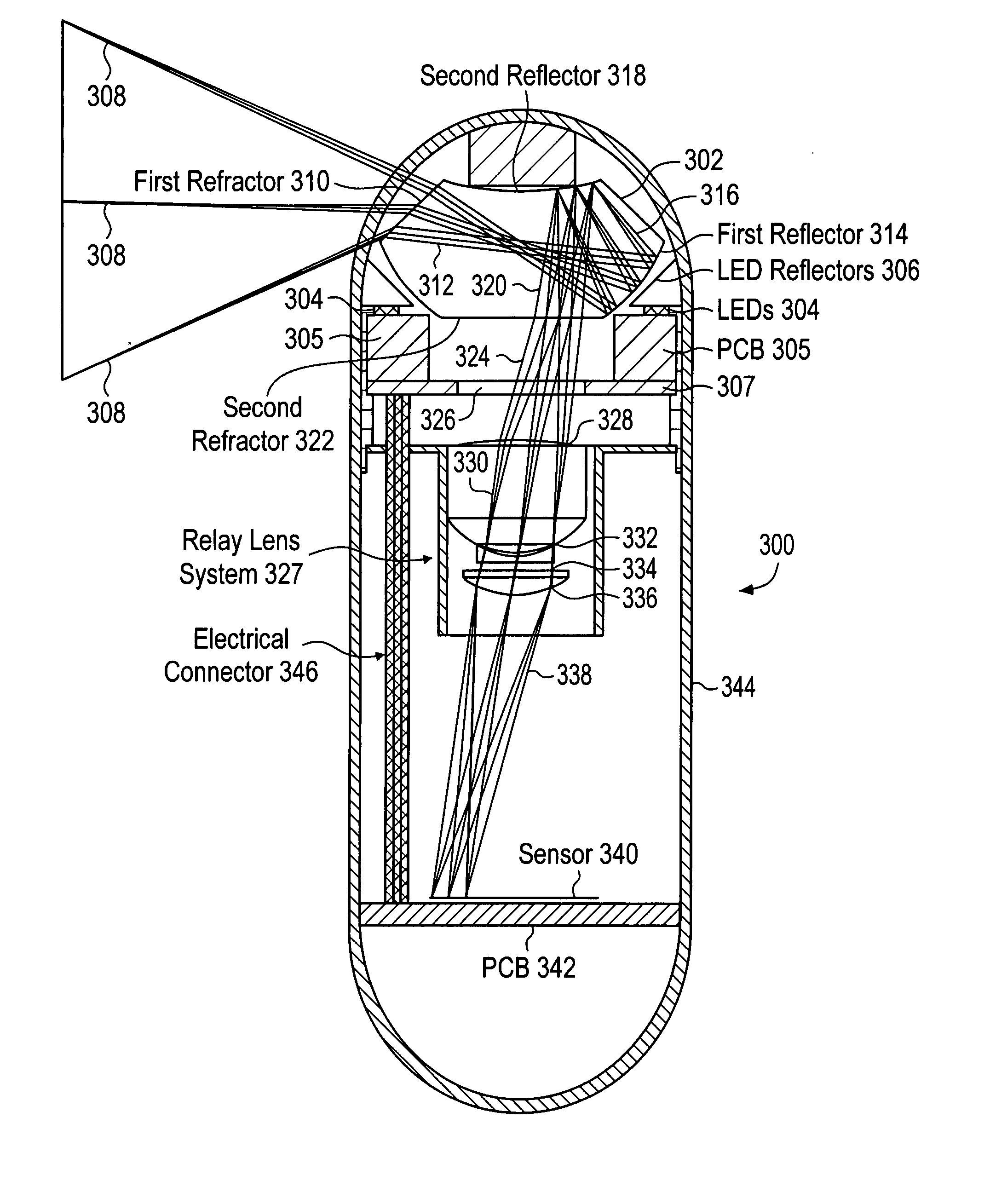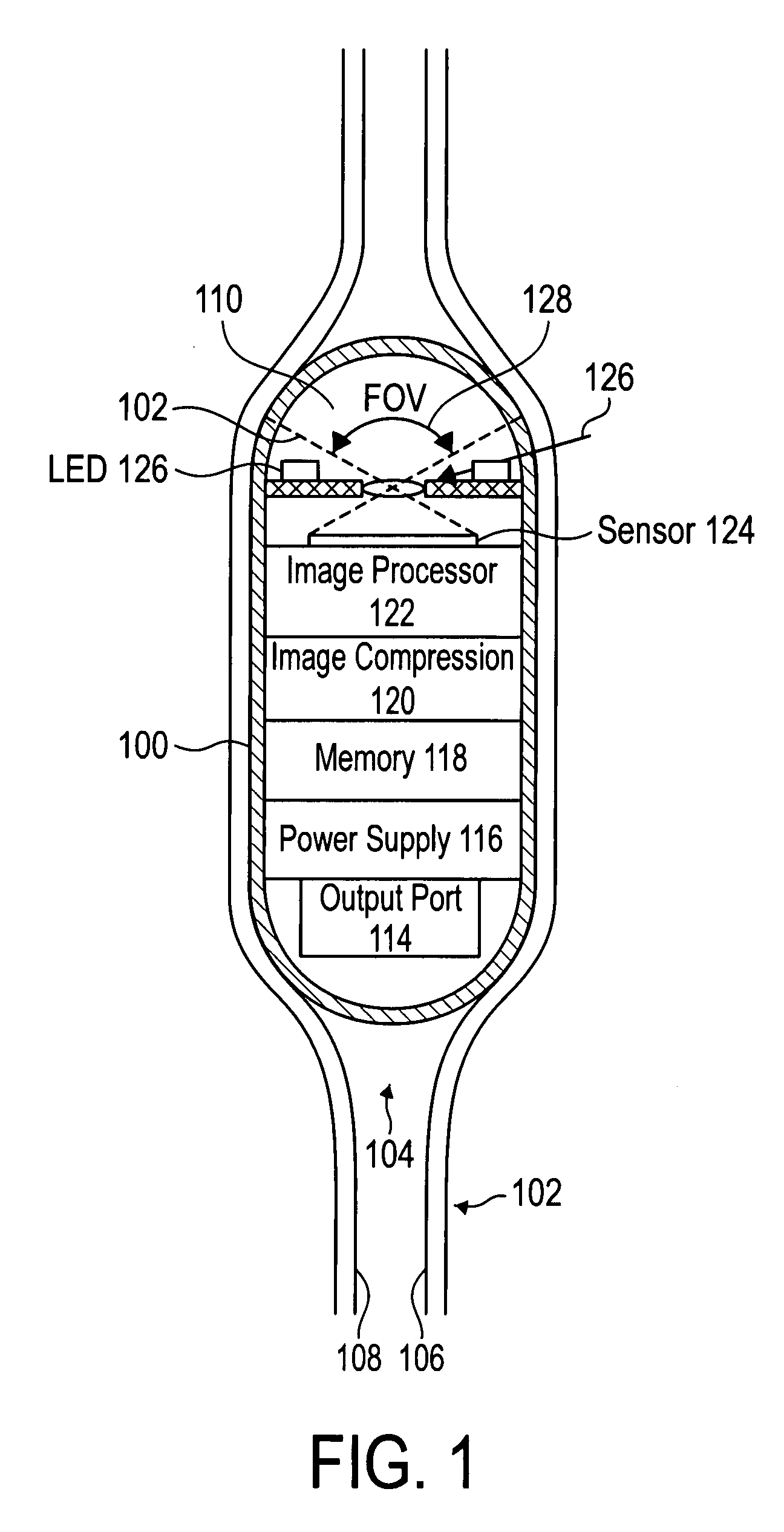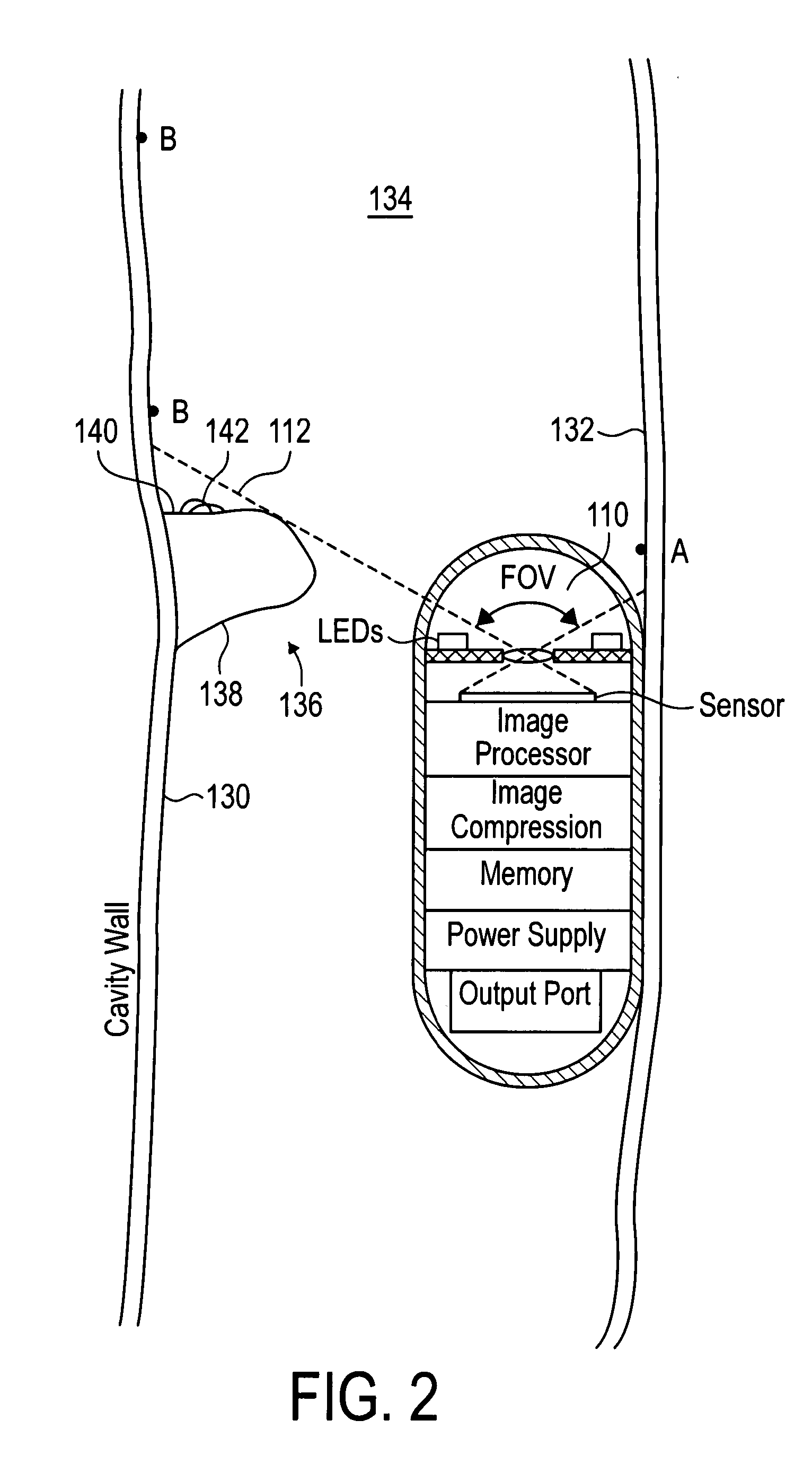System and method for in vivo imager with stabilizer
a stabilizer and imager technology, applied in the field of system and method of in vivo stabilizer, can solve the problems of reduced resolution and numerical aperture at large field angles, increased distortion of simple wide-angle lenses, and ineffective types of configuration
- Summary
- Abstract
- Description
- Claims
- Application Information
AI Technical Summary
Problems solved by technology
Method used
Image
Examples
Embodiment Construction
[0024] Generally, the invention is directed to an in vivo camera system, where the system includes a capsule having at least one balloon configured to orient the capsule in a consistent orientation relative to an internal organ, and an imager encased within the capsule having a field of view that includes substantially all directions perpendicular to a subject tissue surface for capturing a peripheral image of tissue surface surrounding the capsule on a single image plane. The at least one balloon may also help to dilate an organ that might other wise be collapsed and folded so that the interior surface is more fully exposed and visible. The imager may include a panoramic camera encased within the capsule and configured to capture an image of tissue surface about the capsule on a single image plane. The orientation stabilizer may be configured to expand from at least two points on the capsule to stabilize the orientation of the capsule while traveling through an organ such as the co...
PUM
 Login to View More
Login to View More Abstract
Description
Claims
Application Information
 Login to View More
Login to View More - R&D
- Intellectual Property
- Life Sciences
- Materials
- Tech Scout
- Unparalleled Data Quality
- Higher Quality Content
- 60% Fewer Hallucinations
Browse by: Latest US Patents, China's latest patents, Technical Efficacy Thesaurus, Application Domain, Technology Topic, Popular Technical Reports.
© 2025 PatSnap. All rights reserved.Legal|Privacy policy|Modern Slavery Act Transparency Statement|Sitemap|About US| Contact US: help@patsnap.com



